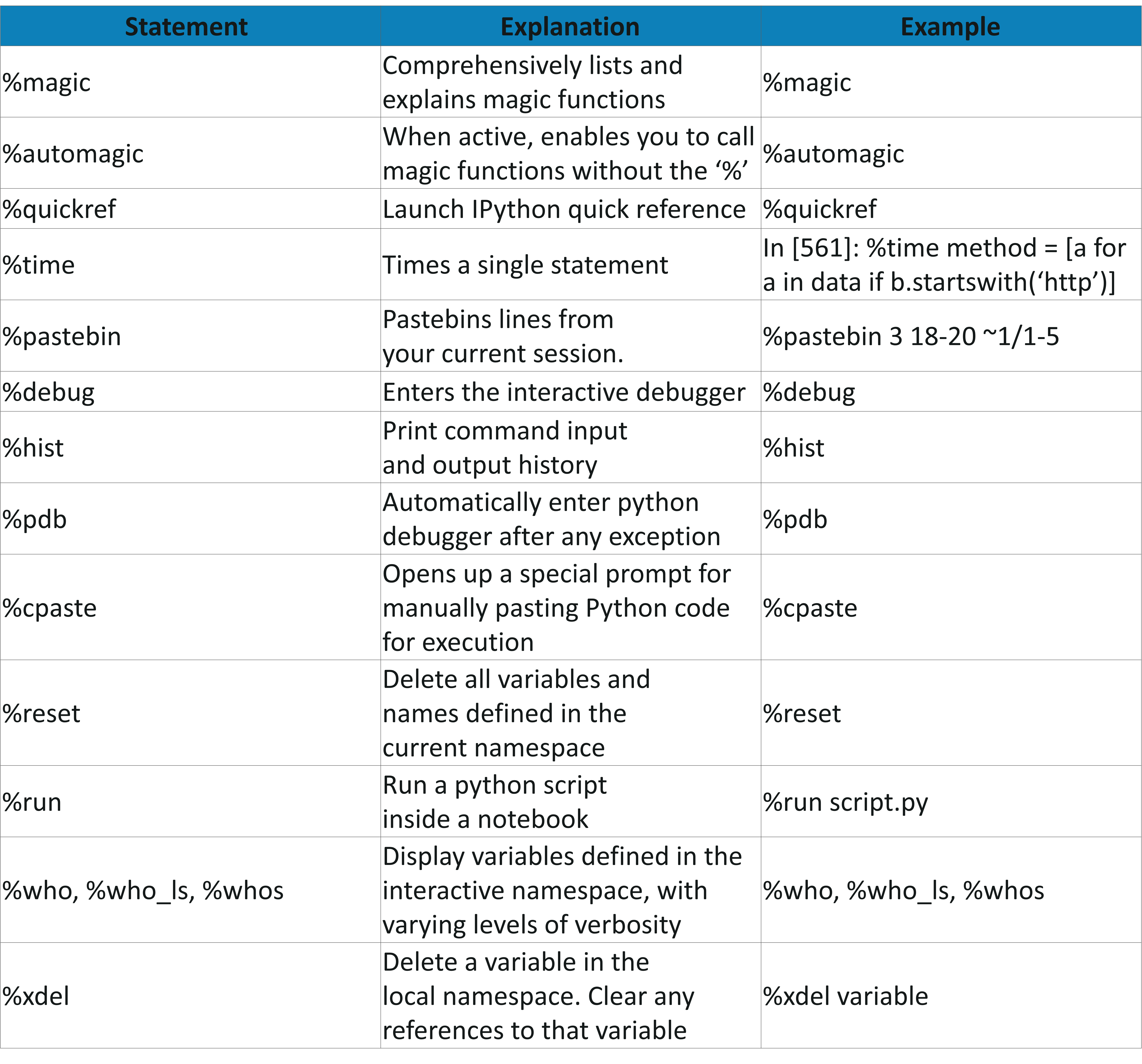Jupyter Notebook files Notebooks written entirely in Markdown Custom notebook formats and Jupytext reStructuredText files Build your book Build your book Execute your computational content Formatting code outputs. # MyST Cheat Sheet. Level 1-6 headings, denoted by number of #.
This document will be available to you during tests and exams
7.1. Table of Contents¶
- Jupyter Notebook Markdown Cheatsheet April 9, 2020 SqlBak mike Jupyter Notebook is a great tool for data analysis. And one of its greatest features is that you.
- GITHUB FLAVORED MARKDOWN GitHub.com uses its own version of the Markdown syntax, GFM, that provides an additional set of useful features, many of which make it.
- JUPYTER NOTEBOOK CHEAT SHEET Learn PYTHON from experts at Keyboard Shortcuts Jupyter Notebook is an open-source web application that allows you to create and share documents that contain live code, equations, visualizations and narrative text. It is used for data cleaning and transformation, numerical simulation, statistical.
- May 22, 2020 - A handy Jupyter Notebook Cheat Sheet that will help you get acquianted with Jupyter Notebook used to develop and share Python Programs and Documents.
7.2. Numeric¶
7.3. Basic plotting functions¶
7.4. Symbolic manipulation¶
7.4.1. Imports¶
Symbol definitions
Example controller and system
7.4.2. Working with rational functions and polynomials¶
Jupyter Notebook Markdown Cheat Sheet Pdf
We often want nice rational functions, but sympy doesn’t make expressions rational by default


The cancel function forces this to be a fraction. collect collects terms.
In some cases we can factor equations:
Obtain the numerator and denominator:
If you want them both, you can use
Convert to polynomial in s
Jupiter Notebook Cheat Sheet
Once we have a polynomial, it is easy to obtain coefficients:
Calculate the Routh Array
To get a function which can be used numerically, use lambdify:
7.4.3. Functions useful for discrete systems¶
Write in terms of positive powers of (z):
Write in terms of negative powers of (z):
Inversion of the (z) transform
7.5. Equation solving¶
7.5.1. Symbolic¶
Jupyter Notebook Cheat Sheet Markdown
7.5.2. Numeric sympy¶
7.5.3. Numeric¶
7.6. Matrix math¶
7.6.1. Symbolic¶
Creation
Jupyter Notebook Cheat Sheet Pdf
Determinant, inverse, transpose
Math operations: Multiplication, addition, elementwise multiplication:
7.6.2. Numeric¶
Creation
Determinant, inverse, transpose
Math operations: Multiplication, addition, elementwise multiplication:
Jupyter Notebook is a great tool for data analysis. And one of its greatest features is that you can easily combine runnable code with rich-text annotations. Markdown cells that contain such annotations support both HTML and Markdown syntax.
Personally I prefer # Header (markdown syntax) to <h1>Header</h1> (HTML syntax) in my notebook’s cells as the former looks more human. So I use markdown syntax more often and a concise cheat sheet for Jupyter Notebook markdown is what I was missing for a long time. Yes, I’m aware of such comprehensive cheat sheets like this and this, they are great but too verbal and it’s hard to print them on one page to have it easily accessible.
Eventually, I decided to gather all crucial points of the markdown syntax that are actual for Jupyter notebook and combine them in a concise cheat sheet that I present to you. It doesn’t explain much but should be useful if you simply forgot something. Click the picture to download the PDF version.
I didn’t get into the details of LaTeX syntax (see the penultimate cell in the cheat sheet with the square root of k) since it’s well described here (get ready, it’s a very long document) and you can even download a pretty good cheat sheet here.
